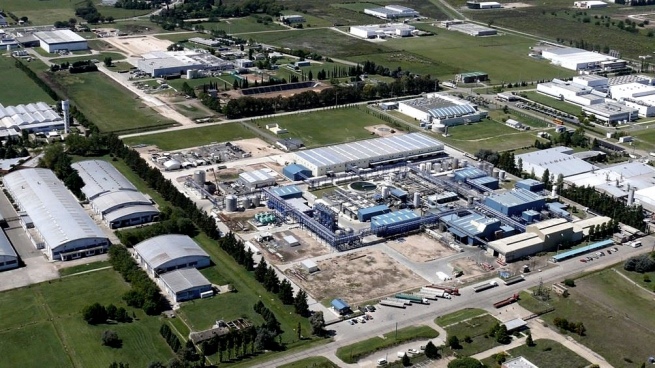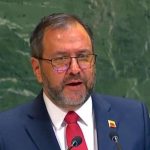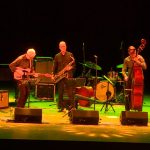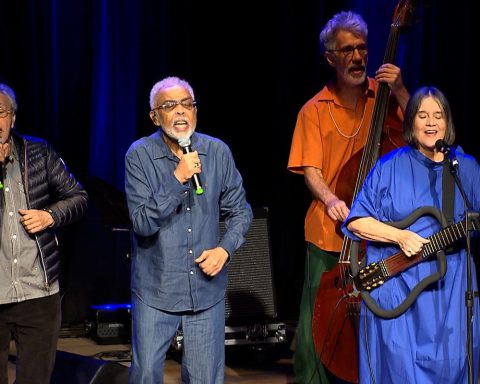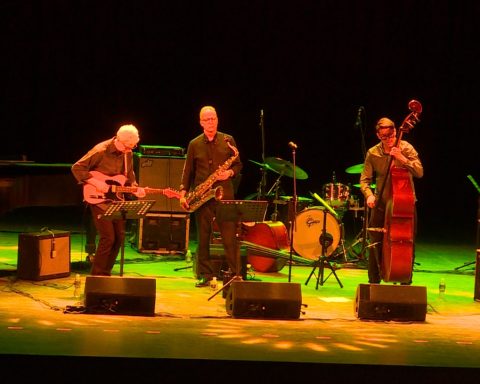The number of industrial parks, industrial precincts and planned industrial sectors has increased fivefold in the last decade and if official and private sector forecasts are fulfilled, by the end of 2022 there will be more than six hundred establishments throughout the national territory, with the generation of a economic activity that could exceed the equivalent of 30% of the total gross industrial product.
The dynamics of the industrial parks recently gained a new impetus with the announcement made in the Santa Fe town of Las Parejas by the Minister of Productive Development, Matías Kulfas, about the financing of 40 new ventures this year.
If we take into account that, according to private surveys, there are currently 580 parks, precincts and industrial sectors planned, the realization of these new ventures would lead to over 600 locations.
“The importance of the industrial park, especially in the interior, is what contributes to improving the competitiveness of the companies located there,” Rodolfo Games, president of the Association of Argentine Industrial Parks (APIA) and the International Network of Industrial Groupings (RIA), who added that these locations “have two other no less important incidents.”
Games, former national director of Industrial Parks between 2008 and 2015highlighted that “they provide local development, add value, genuine employment and encourage the roots of young people, but also contribute to good coexistence in the area where they are located, collaborating with the reduction of traffic accidents, annoying noise and smoke. There are health issues that, now with the pandemic, are easier to control in a closed environment such as an industrial park,” he assured.
For his part, Daniel Rosato, president of Industriales Pymes Argentinos (IPA) and of the Banana Industrial Parkin the Buenos Aires party of Berazategui, valued the importance of the constitution of true “business communities” in which there is not only mutual aid but also a reduction in security costs, purchases of supplies and work materials, as well as joint efforts, as trade missions to other countries.
The growth both in the number of parks and in the companies established allowed the Red Parques (organizer of the Buenos Aires Industrial Parks Exhibition, Epiba) to project that by the end of 2022 “30% of the country’s industries” will be located in those establishments.
Games went further and estimated that the participation of companies located in industrial parks in the industrial GDP “must be around 35%”.
A history that has been going on for more than six decades
The history of industrial parks in Argentina was not exempt from the ups and downs of the economic policies applied since the middle of the last century, when the first projects began to be outlined.
The president of the APIA (Association of Argentine Industrial Parks), Rodolfo Games, goes back to the 1960s to identify the one in San Antonio Oeste, in Río Negro, as one of the first to be erected in the country, within the of a universal trend that gained momentum after the Second World War, although the first recorded case dates back to 1894, when the advance of industry in Manchester led to the construction of Trafford Park.
The first notable impulse took shape in the 1970s and 1980s, but in the ’90s “with deindustrialization, most of these spaces became inactive” according to the Argentine Confederation of Medium Enterprises (CAME), which added that “in the middle of that decade there were 154 farms, almost all of which were in San Luis, La Rioja, Tierra del Fuego, Chubut and Entre Ríos, but with low occupancy levels.
In 2002, 80 parks remained partially active, but as of the following year “a new cycle began, creating an average of 21 parks and industrial areas per year,” added the entity.
Games recalled his time in the public service as national director of Industrial Parks of the Ministry of Industry and that when he left office, in 2015, “there were almost 400”.
Also, he had a critical view of the arrival of macrismo to power in terms of support policies for the sector: “very little was done, the programs were deactivated, the NRAs (Non-Reimbursable Contributions), especially in the province of Buenos Aires”, where “only one industrial park was registered, Morón, where the Deutz engine factory was located”.
Since 2020, he assured, “the NRAs were reestablished, training was carried out and the ONPI (National Observatory of Industrial Parks) was promoted.”
The NRAs consist of financial assistance from the national State of up to 0 million per park for the performance of intramural works, with the commitment of a counterpart of 10% that is not required if the project presented includes the execution of policies with a perspective of gender for the productive environments of the park.
This year it is expected to allocate a total of .300 million in ANR for different projects, in addition to the continuity of the subsidized line of credits for companies installed or to be installed. In 2020 and 2021, 67 projects in 21 provinces were financed with ANR for .656 million, and credits at a subsidized rate for a total of .480 million were granted to 36 projects.
The survey of industrial parks throughout the country is a more difficult task than might be believed, due to the lack of coordinated information and, furthermore, to the confusion about what exactly is considered an industrial park.
In this regard, Rosato specifies that an industrial park is “a closed area, with a fenced and forested perimeter and in which there can only be one entrance and one exit”, differentiating it from other open or semi-open sites such as industrial precincts or Planned Industrial Sectors, a kind of “industrial neighborhoods” that can be accessed from different points.
On the other hand, the lack of updated information leads to the coexistence of different statistics with establishments in activity and others in project.
Games told Télam that in the APIA database “it gives us around 500”, although it maintained that the 580 identified by the website parqueindustriales.com.ar “they are not an insane number.”
For his part, Alberto Criado, administrator of that site, clarified that the list includes industrial parks, industrial precincts, logistics centers and planned industrial sectors.
Of that total, 40% of the establishments are located in the province of Buenos Airesfollowed at a considerable distance by Córdoba and Santa Fe, with 62 and 60 units, respectively.

Games indicated that while “most parks are multisectoral”that is to say that they include different industrial sectors, “there are also some focused, like the two in Vaca Muerta, which point to the hydrocarbon sector, miners in San Juan or loggers in Misiones.”
Among the novelties, is the recent inauguration of the Bariloche Technological Park -in whose development Games participated in its role as consultant- with 41 established companies, including Invap.
“Lately, many logistics parks are being set up, especially private investment, and the perspective is that they will be strengthened by the development of e-commerce, which requires much more space for storage in sheds,” he added.
In that sense, Games specified that although public investment continues to be the main one in this kind of undertaking, private investment is gaining ground.: “Until a few years ago, 90% corresponded to public investment and 10% to private investment, now we will be at 70% and 30%, respectively,” he explained.
“A shopping center for industrial SMEs”

Textile Sniafa was one of the main producers of synthetic yarns in Argentina since its inauguration in 1948 and came to employ more than 2,000 people, until it closed its doors in May 1983.
Since then, the immense property in the south of the Buenos Aires suburbs remained abandoned until twenty-one years later, on March 31, 2004, the Municipality and the Industrial Union of Berazategui jointly managed to enable the Plátanos Industrial Park, with the recycling of the old facilities and the construction of new buildings.
For the Park authorities, his story “should be registered as an example of the faith and effort of men and women, both in the private and public spheres.”
One of the protagonists of this reconversion is Daniel Rosato, president of the park and in turn head of Industriales Pymes Argentinos (IPA) and vice president of the Industrial Union of Berazategui.
In dialogue with Télam, Rosato recounted his experience as an industrialist –he runs a paper mill and a metallurgical company- in the move from his previous locations in the urban area of Bernal and Quilmes to the industrial park he presides over, and which currently has 53 companies installed .
“The park was one of the first of this century and the second or third created by a specific decree,” he recalled, while admitting he was not afraid to exaggerate when he said that compared to his time in the urban area “it is a paradise “.
In this regard, he highlighted the advantages of having the two factories within a closed perimeter from the point of view of security: “we can work with the gates open, without the need to permanently close them, as is the case with many companies located in the middle of a city,” he said.
Likewise, since these are communities that perform in a manner similar to a consortium, there are situations of mutual aid that could hardly be carried out in other situations.
“In many cases, companies agree on joint purchases of work clothes or industrial supplies. If a food company, for example, breaks a pipe, it has a metallurgical company next door that can repair it,” Rosato said, for whom the park “is a shopping center for industrial SMEs”.
The projection of the Plátanos Industrial Park is to exceed 2,500 people employed in the established companies.
